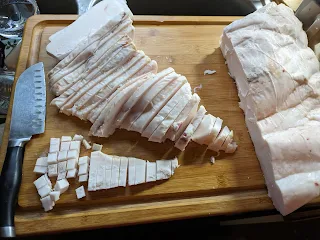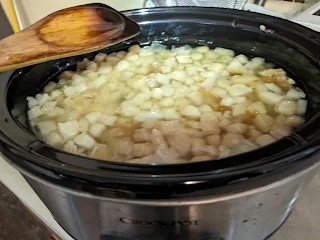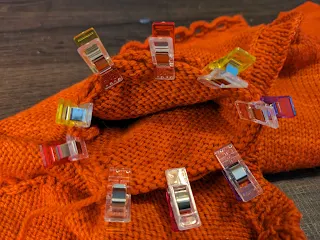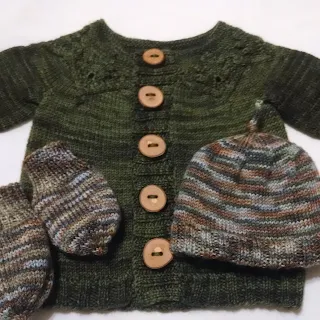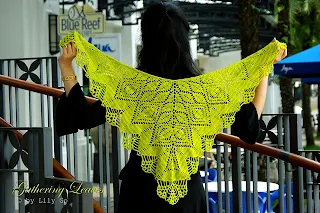A wicked good blog about homestead happenings in the shadow of Mount Katahdin, Maine. Many ramblings are sure to happen here, including, but not limited to, knitting, sewing, chickens, gardening, canning, freeze drying, general homestead wanna-be stuff (you can be a homesteader with just chickens, right?!?), and any other activities that manage to capture my short little attention span at the time.
Search World On A String Designs
Saturday, January 6, 2024
Solo Sock Club
When I saw the original post and decided I wanted to do this also, I was mid-project on a pair of socks. I was determined to finish them ASAP so that I could dig into the first bag of my 2024 Sock Club. Never had a project FELT like it took so long. I did complete them yesterday, and immediately asked my husband to choose a bag for me. He graciously obliged, and I opened it to find this: This is a skein of yarn that was hand dyed by me and was originally dyed for my Etsy shop. It never did sell, but it was always a favorite of mine, so I pulled it for my sock club. This is the only skein out of the year that I dyed myself. It is a blend of 75% superwash merino and 25% nylon. The colorway is called Caramel Apple. It works up with short bursts of mini stripes in the contrast color. I'm nearly ready to turn the heel on the first sock. Due to the way that the colors in the yarn will work up, I opted for a vanilla sock pattern in this case. I find that in knitting projects, either the colors or the textures will pop. For yarn with lots of colors, a simple pattern will show them off. For a pattern with oodles of texture, a solid and light-colored yarn will really show off those pattern details. I am using a plain pattern here to allow the dye job to really shine in my finished socks. I will post the finished socks once they are finished. Follow along, as I will have updates on all of the monthly sock knits.
Thursday, December 28, 2023
How to Render Lard
We use lard a lot for frying eggs or meat, or for anything we want to make crispy. I often make freezer batches of breakfast burritos, and when put in the microwave, the tortillas get soft and sometimes soggy. I heat them in the microwave, then finish them off on the stove in a bit of rendered lard. They crisp right up and taste amazing. Lard is also great for frying pretty much anything and gives delightfully crispy results. So *how* does one home render lard, you ask? Great question; I'd love to tell you. Our pig fat comes from the butcher in a large, several-pound package, vacuum sealed like our meat. I use a crock pot to melt it down, and the first step is cutting up the fat. I start with the fat frozen solid. It takes a bit of elbow grease to get through the thicker parts, but as the fat warms it will start to melt on hands and can make the process quite slippery. I start by cutting the fat down into big strips that are no wider than my knife is long. Then, I cut off slices about 1/4 to 1/2-inch thick. Next, I cube these down, then add them to my crock pot over low heat. The smaller the chunks, the faster the lard will render. You certainly want them to be chunks of 1" or less. I aim for 1/2 to 1/4-inch chunks, and this is often led by how much available time I have to dice it up - on a busy morning, the pieces are larger. If your butcher will grind it for you, or if you have a grinder, such as this KitchenAid attachment, then it will significantly cut down on processing time. I have the KitchenAid attachment, but I normally just cut it up with a knife, as I don't want to bother cleaning fat out of the grinder attachment and typically I don't mind if it sits in the crock pot a few hours longer. As the fat heats, it will gradually melt. I come back every couple of hours, and when there is enough liquid, I simply scoop some off the top and store in a Mason jar. I do filter my lard, and I do this with a funnel and cheesecloth. As you can see, the liquid fat is an off-white color and semi-transparent. As it cools, however, it will harden into a snow-white solid in the jar. I highly recommend givnig this a try. Your home-rendered lard can serve a replacement for anything you'd use lard or Crisco to prepare in your kitchen, and it does it without unhealthy trans fats. You will gain more control and confidence about what you are consuming, where it came from, and how the animals were treated. If you don't have access to your own pig fat, you may be able to obtain some from your local butcher - it's worth an ask. Leaf fat is the prime material for this job; it is the fat around the kidneys of a pig. This was prepared with back fat, which contains more meaty bits. I find that the first draw of liquid from the back fat is completely suitable for pastry baking, and it has an odorless product. The closer you get to the end of the render, there may be more color and potentially a bit of a piggy flavor...sort of like bacon. This is great for frying eggs, making biscuits, or any savory type of cooking. Just save your first draw and label it well for pastries and sweets.
Thursday, December 7, 2023
Wee Wildflower Gifts and Easing in Sleeves in Seamed Knitting
I start by marking the midpoint on the sleeve, and identifying the top and bottom points in the armhole. Then I loosely put the sleeve in the armhole. Next, I line up the midpoint of the sleeve with the top of the armhole, and the ends with the bottom of the armhole, and then I secure these points with sewing clips. Next, I work my way around the armhole, stretching and securing the sleeve so that it is eased in to the full space of the armhole and is also evenly distriubted throughout. During this process, I will stretch, inspect, shift and secure until I am satisfied that the sleeve is properly positioned and stretched evenly all the way around. At this point, I secure a piece of yarn and sew the sleeve in place using the mattress stitch and removing clips as I go around. I have always been pleased with the results when doing it this way, and I haven't had to pull it out and start over, like I did before I started using this technique. The sweaters are complete now and have been gifted. I hope the recipients enjoy the sweaters as much as I enjoyed crafting them. Next up on the needles are a few Christmas presents...stay tuned!
Tuesday, November 28, 2023
The #1 Plant Every Apocalypse Garden Needs
Having been impressed with the hardiness and yield of this handful of beans, I saved my small harvest and planted an enire row the next year. My goodness. Have I mentioned that while I enjoy gardening, I am overall rather new and not very good at it? My (very minimal) effort yielded 4 cups of dry beans. I never would have expected that black beans would be a good crop for Maine, but I was pleased! What I found most impressive was how I could completely ignore these plants and still have what I consider to be a successful harvest. This year, I planted 2 rows of the black beans. Here they are, living their best bean lives, suffering my neglect, yet still producing for me: We did have an unusually soggy growing season this year in Maine. I tried to choose a day to harvest when they would be mostly dry. I ended up with a respectable amount in my Hannaford tote bag. (Note that I invested in the weed barrier cloth this year)
Because the pods were still a bit damp when harvested, I did cycle them through my dehydrator to dry them out. Alternatively, you could pull the plants and hang upside down to dry out, but I am limited on space, so dehydrator it was for me. Then, I let them sit like the patient little harvest they are until I had time to deal with them. I shucked them a little at a time over several weeks. My 2 rows of black beans yielded 12 cups of dry beans, which is about the equivalent of 24 cans of black beans from the grocery store. I also planted one row of Flambo beans (from Johnny's Selected Seeds), and that resulted in a little more than 4 cups of dry beans. Right now, they are sitting in a jar, although at some point, when I am gosh darn good and ready, I will can them up. The beauty of dry beans, though, is that time can be whenever. Last year's bean harvest didn't get canned until about May, and they are just fine. I do like canning them up, as they at that point only need to be put into a recipe or reheated, without all the soaking and planning. However, whether to store dry or can the beans is really a personal preference. So, why do I suggest that dry beans are a top crop for my apocalypse garden?
1) Easy to Grow. First of all, they are super hardy. You can be busy with obtaining clean water, fighting off zombies and tending and protecting animals (or working, for a non-apocalypse scenario) and not worry that your crop will not produce or will go by while you're off doing other things. Life happens. So should your garden.
2) Beans are a fabulous source of protein. While most of the plants in my garden are lacking in this area, beans really step up. If you couldn't count on the grocery store to provide your nutrition, obviously you'd have backyard chickens for eggs and maybe a few scrawny roosters for meat. But if you had raccoons, foxes or fishers feasting in your yard, the beans could help round out your protein content of your home-produced food while you waited to hatch and raise replacement chicks.
3) Cooking Versatility. From bean dip, to soups and stews, to salads, quesadillas and burritos...there are lots of ways to use beans.
4) Easy-to-Harvest Seeds. Once you buy your first beans (or save some from a bag before cooking dinner), you need only save out a handful of beans at the end of each season to be able to continue growing them indefinitely. No waiting on seed orders long after society and the Postal Service have collapsed.
5) Ease of Long-Term Storage. If you don't have time to preserve your harvest or if you don't know how or don't own a canner....you'll be just fine. Simply get the beans dry and collect them and store in a cool, dry location. They will last a long time with almost no effort, and they are very forgiving. If preservation is a skill you possess, you certainly may can them, but if you don't have experience with it, you'll get by just fine.
6) Improve Soil Quality. Beans are nitrogen fixers, so they help enrich your soil with nitrogen. This comes in super handy on next year's planting, if you plant your heavy nitrogen feeders, such as tomatoes, cukes, squash or cabbage, where your beans grew the previous year.
In all likelihood, we are not anywhere near one plant being the lynchpin of survival, but I do hope you'll give dry beans a try in your garden anyway. They are super easy, super delicious and pack a big nutritional punch as well.
Sunday, November 19, 2023
Catching Up...
Covid happened, of course, which caused me to dust off the old sewing machine to mass produce face masks back when you couldn't buy them. This led to me trying other projects, like knitting project bags and eventually, totes, backpacks, leather wallets, etc. As busy as I have been with all this, my job(s) for the last few years have been - as jobs often are - sometimes overly consuming of both time and mental bandwidth. Over the last several months, things have become much more manageable, which makes me believe that I can pick up this little project again. Oh...I also started a YouTube channel. I talk about chickens a lot, and sewing and knitting as well. You can check it out here: www.youtube.com/@WorldOnAString
Saturday, December 27, 2014
Indie Gift-A-Long Blog Interview
As you may already know, I am a participating designer in the Indie Gift-A-Long on ravelry this year. It's been a ton of fun, and I'm so glad that I was able to take part this year. For those who aren't familiar, the GAL involved a period in November when designers offered patterns for 25% off, then knitters participate in knit-a-longs or crochet-a-longs, which involve lots of prizes. It also includes games on ravelry, which of course also included lots of prizes. It offers a great chance for knitters and crocheters to plan their holiday gifting (or their selfish knitting) and knit and crochet together for fun and prizes (or just pick up some great patterns at a discount and work on them later).
Today, you are in for a treat, because now that the bustle of the holidays has (mostly) passed, I have a blog interview of another designer to share with you. I was very excited to discover Lily Go's work, because it is amazing! I instantly fell in love with several of her shawl patterns. You can find Lily's blog here and her ravelry patterns here.
Here is what Lily had to say when I interviewed her:
How did you first learn to knit?
I was a crocheter first (learned to crochet when I was 5 years old). I only attempted to knit when I was a teenager but somehow I didn’t enjoy it as much as crochet (my tension was not consistent, and always dropped my stitch) so I stopped. Until one day about 8 years ago I learned about continental knitting. Never stopped knitting since.
What inspired you to start designing?
In 2006 stumbled upon a knitting blog where she offers her knitting patterns for sale. This idea fascinated me and motivated me to do the same. I managed to publish my first pattern, Sage Cardigan, in February 25, 2007.
What is your favorite yarn(s)?
I have no favorite brand, as long as it is natural fiber.Which of your patterns make for really great gift knitting?
Most of my patterns are accessories, and I think accessories is perfect for gift because you don’t have to worry about the fit.
Do you tend to have several unfinished items on your needles, or do you prefer to have only one project in the works at a time (or something in between)?
I tend to work one project at a time.
Which one of your designs is your favorite?
For crochet, it is Gathering Leaves.
For knit, it is a tough choice between Dandelion on a Meadow,
Fox and The Grapes and When The Flowers Bloom.I would like to comment here with my favorite design of Lily's, which is the Heart on Fire shawl.
Do you get to do any “selfish knitting?”
Oh yes!! I am a very selfish knitter. Most of the time I knit for myself.
What gives you the feeling that you got your money’s worth out of a pattern?
I haven’t bought knit pattern before. However, for crochet pattern, I only bought fully charted pattern.
What do you most enjoy about knitting or crochet?
I love that I can multitasking while I am knitting or crocheting. I love the process of knitting/crocheting, and if I have a gorgeous FO, that is a bonus. I also like the idea that even you don’t like the result, I can always frog and redo.




